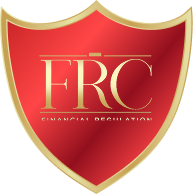In an increasingly complex and volatile financial landscape, sustainable wealth management has become an essential focus for both individuals and institutions. The idea of sustainable growth in wealth management goes beyond mere accumulation of assets — it encompasses strategies that not only build wealth over time but also protect and preserve it for the future. It involves planning, diversification, responsible investment practices, and tax efficiency, with a strong emphasis on long-term sustainability.
This comprehensive guide will explore the various techniques and strategies employed in wealth management for sustainable growth. Whether you're an individual investor or part of a family office, understanding the key components of a well-rounded wealth management strategy can significantly impact your long-term financial success.
By utilising the right tools, methods, and financial advice, you can ensure that your wealth not only grows but also remains resilient in the face of challenges, market fluctuations, and economic changes. Additionally, the following techniques and insights will help protect your wealth, manage risks, and ensure that you meet your financial goals, now and in the future.
For more in-depth guidance on sustainable wealth management, professional insights, and certification options, consider exploring resources such as the Investment Advisor Certification Guide.
The first step in creating a wealth management strategy focused on sustainable growth is defining clear financial goals. Whether you're planning for retirement, building a family legacy, or funding a business venture, having a clear understanding of what you want to achieve financially is crucial.
Wealth management for sustainable growth requires long-term thinking. One of the fundamental principles is setting clear, long-term financial goals. These goals should be realistic, measurable, and aligned with your overall life aspirations.
For example, retirement planning is a key component of many individuals’ wealth management strategies. The goal of ensuring financial independence in retirement should consider factors such as the desired lifestyle, expected longevity, and inflation.
In addition to retirement, goals might include purchasing a home, funding education for children or grandchildren, or creating a charitable foundation. Clear financial goals act as a roadmap that helps guide decisions about saving, investing, and managing assets.
While long-term goals are crucial, it’s also important to manage short-term and mid-term financial goals. These might include buying a car, taking a vacation, or saving for a home down payment. Short-term goals are often easier to achieve, and once met, they can provide a sense of accomplishment and motivation to continue working toward longer-term objectives.
One of the key techniques for sustainable growth in wealth management is diversification. Diversifying investments helps spread risk and ensures that an individual’s portfolio remains balanced and resilient in the face of market volatility.
A well-diversified portfolio allocates assets across different asset classes such as equities, bonds, real estate, and alternative investments. The objective of this approach is to reduce the impact of any single underperforming asset class on the overall portfolio.
For example, equities may offer high returns, but they also carry higher risk. On the other hand, bonds may offer lower returns but are generally less volatile. By combining both types of investments, you can reduce risk while achieving long-term growth.
Risk tolerance plays a significant role in the diversification process. Understanding your risk tolerance — the level of risk you're willing to take — is essential when deciding on an appropriate asset allocation. This assessment should take into account your financial goals, time horizon, and personal preferences.
In addition to diversifying across asset classes, geographic diversification is also important. By investing in global markets, you can reduce the risk associated with economic downturns in any one country or region.
For instance, emerging markets may offer higher growth potential, but they also come with greater risk. Balancing investments between developed and emerging markets can help you achieve sustainable growth while managing risk effectively.
Tax efficiency is a crucial component of wealth management strategies for sustainable growth. By strategically managing your tax liabilities, you can preserve more of your wealth and accelerate your financial growth.
Tax-advantaged accounts such as Individual Savings Accounts (ISAs), pensions, and retirement funds can significantly reduce your tax burden. Contributing to these accounts can help grow your wealth over time without the drag of taxes.
For example, ISAs allow individuals to invest in a variety of asset classes without paying tax on the returns. Similarly, pension schemes often provide tax relief on contributions, enabling individuals to save more towards retirement.
When it comes to managing investments, understanding capital gains tax is vital for maximising returns. Capital gains tax is the tax levied on profits made from the sale of assets such as stocks, bonds, and real estate.
One technique for minimising capital gains tax is to hold investments for a longer period. In many countries, long-term capital gains are taxed at a lower rate than short-term capital gains. Additionally, using tax-loss harvesting strategies — offsetting gains with losses — can further reduce your taxable income.
In recent years, sustainable investing has emerged as a growing trend in wealth management. Sustainable investing focuses on investments that contribute positively to society, the environment, or both. For those seeking long-term growth, incorporating sustainable investment strategies is not only ethically rewarding but also financially beneficial.
ESG investing takes into account environmental, social, and governance factors when selecting investments. By investing in companies that prioritise sustainable practices, social responsibility, and good governance, investors can ensure that their portfolios align with their personal values.
Moreover, ESG investing has been shown to be financially viable. Companies that follow good governance practices, reduce their environmental impact, and prioritise social responsibility tend to outperform their peers in the long term.
Green bonds and investments in renewable energy are excellent examples of sustainable investment opportunities. These investments not only offer the potential for long-term returns but also contribute to addressing global environmental challenges.
While growing wealth is important, protecting that wealth is equally crucial. Insurance is a key tool in wealth management for mitigating risks and safeguarding assets from unforeseen events, such as accidents, illnesses, or natural disasters.
Life insurance is a critical component of wealth protection. It provides financial security for loved ones in the event of death and can help cover outstanding debts, mortgages, or future living expenses. Health insurance is also essential in protecting wealth, as medical costs can quickly drain assets if not properly managed.
For individuals with significant assets, property insurance and asset protection strategies are crucial. Insurance policies for homes, automobiles, and business ventures provide protection from unexpected financial losses. Additionally, estate planning tools such as trusts can be used to shield assets from creditors or legal claims.
As individuals age, the risk of needing long-term care increases. Long-term care insurance helps protect wealth by covering the costs of extended healthcare, whether at home or in a care facility. This form of insurance helps ensure that your wealth is preserved for future generations rather than being depleted by healthcare expenses.
Retirement planning is an integral part of any sustainable wealth management strategy. The earlier you start saving for retirement, the more time your investments have to grow.
Pension funds are a common tool for saving for retirement. Many people rely on employer-sponsored pension schemes to accumulate retirement savings. In addition to these, individuals can also contribute to personal pensions, which offer tax advantages while building a retirement fund.
Once you approach retirement, you will need to transition from saving to withdrawing funds. Developing a decumulation strategy ensures that you can continue to live comfortably without exhausting your retirement savings prematurely. This strategy might involve taking withdrawals from different accounts, such as pensions, ISAs, or other investments, in a tax-efficient manner.
Healthcare expenses can be a significant concern during retirement, especially in later years. Planning for these costs, including long-term care and medical insurance, should be a key aspect of your retirement strategy.
Given the complexity of wealth management, it is often beneficial to work with professional advisors who specialise in different areas of financial management. Financial advisors, tax professionals, estate planners, and investment managers all play important roles in building and maintaining a sustainable wealth strategy.
By working with these experts, you can ensure that your strategy is optimised for long-term growth, tax efficiency, and risk management. Professionals can also provide valuable insights into market trends, new investment opportunities, and the latest wealth management tools and techniques.
For those looking for guidance on managing wealth sustainably, the Investment Advisor Certification Guide offers a wealth of information on becoming a certified investment advisor and the key skills necessary to effectively manage client portfolios.
Sustainable wealth management requires a multifaceted approach that considers the long-term growth of assets, protection against risks, and the efficient transfer of wealth. Through clear financial goal-setting, diversification, tax-efficient strategies, and sustainable investing, individuals can build and protect their wealth over time.
A focus on long-term thinking, strategic asset allocation, and professional advice can help ensure that wealth management is not just about growing assets but doing so in a way that will benefit future generations. Whether you are building wealth from scratch or managing an existing portfolio, incorporating these wealth management techniques for sustainable growth will help you achieve your financial goals and preserve your legacy.
The wealth management strategies outlined here are only a starting point. Each individual’s needs are unique, and it’s essential to regularly review and adjust your financial plan to account for life changes, market shifts, and new opportunities.
By maintaining a focus on sustainable growth and carefully managing your investments, wealth, and resources, you can ensure a bright financial future for yourself and your loved ones.
Be the first to know about new class launches and announcements.


Financial writer and analyst Ron Finely shows you how to navigate financial markets, manage investments, and build wealth through strategic decision-making.
